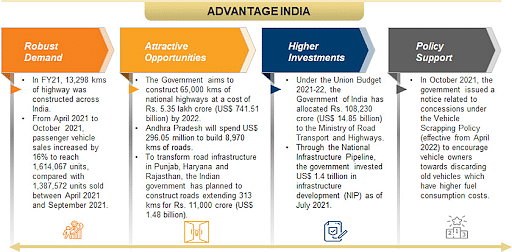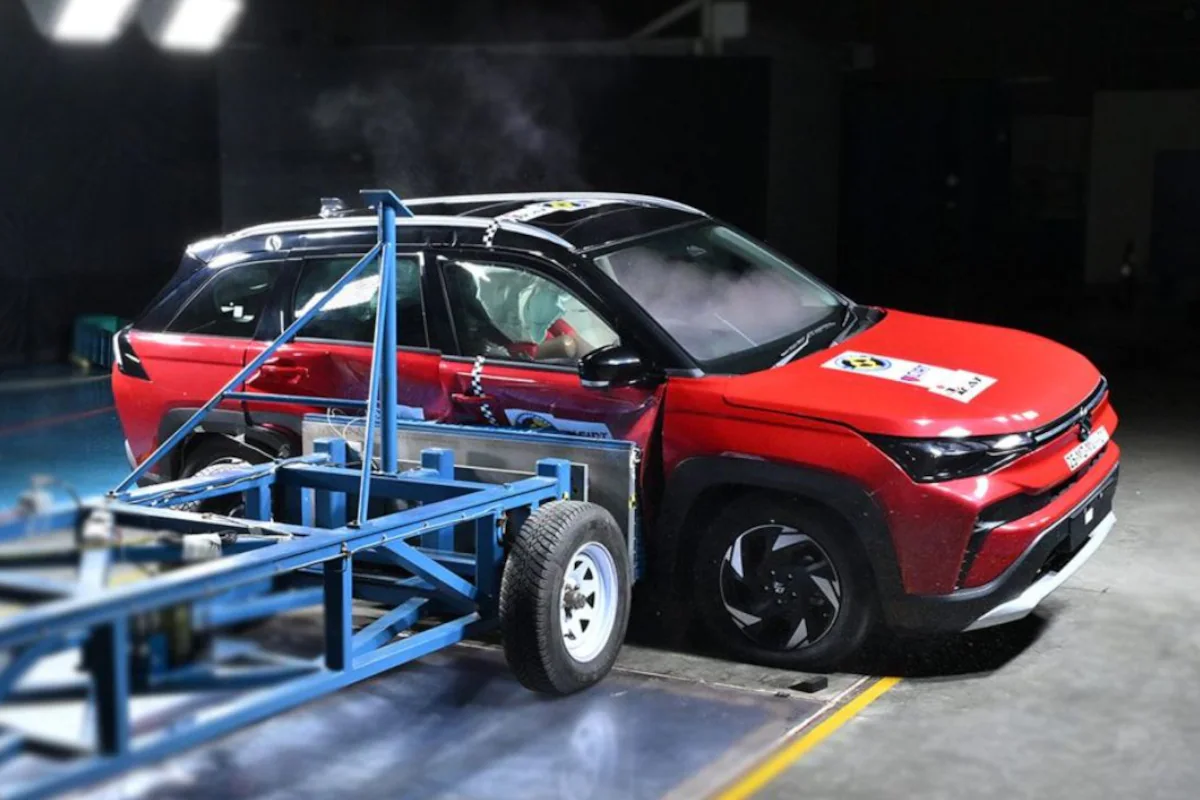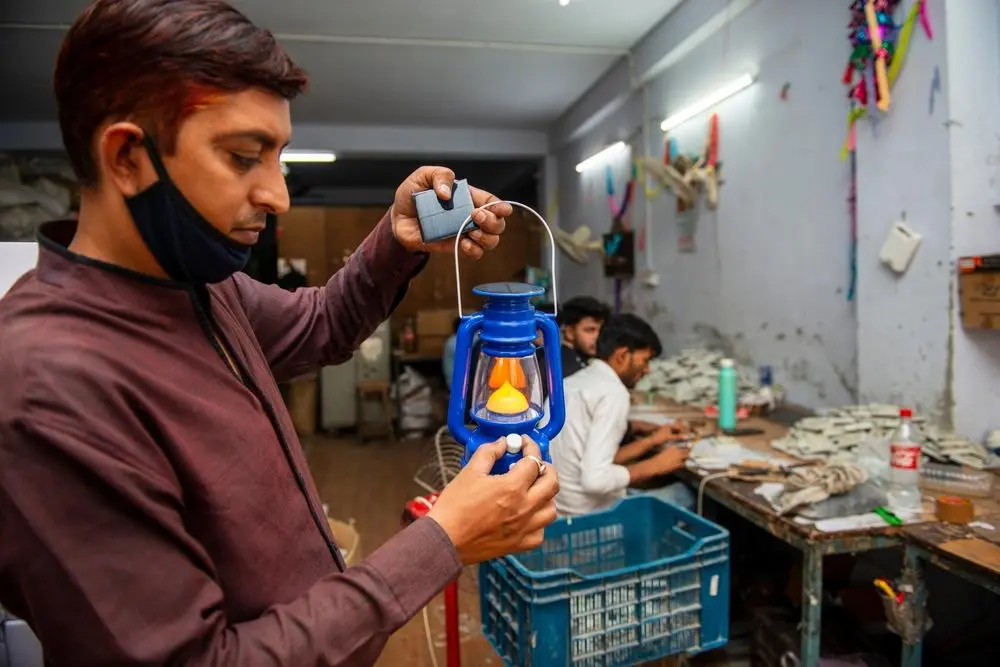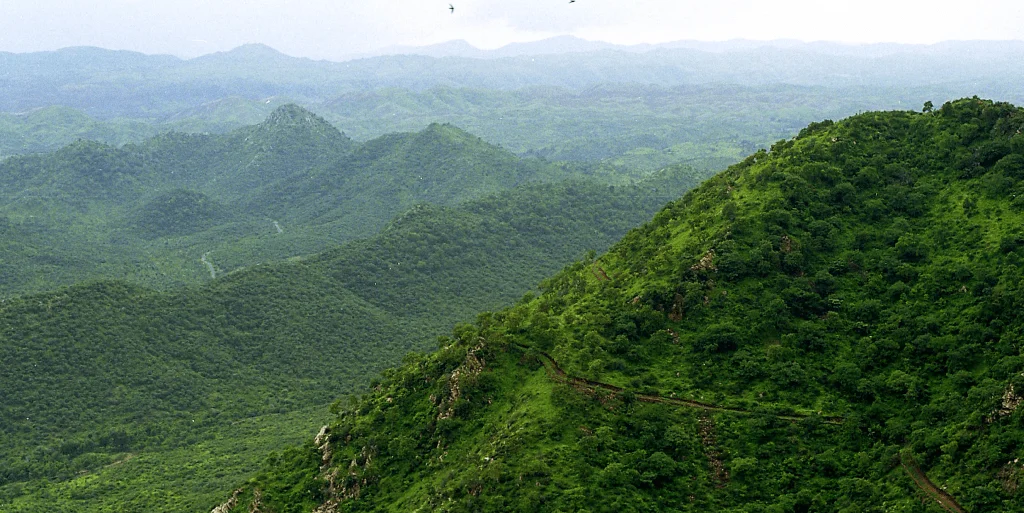- India has the second-largest road network in the world, spanning a total of 5.89 million kilometres (kms). This road network transports 64.5% of all goods in the country and 90% of India’s total passenger traffic uses road network to commute.
- Road transportation has gradually increased over the years with improvement in connectivity between cities, towns and villages in the country.
- India’s road network is the busiest for travel and freight. There has been a steady growth in road mobility due to the fast-rising economy, automobile availability, and improved road connectivity.
Classification of roads in India
The roadways in India are classified into four categories: National Highways, State Highways, District Roads, and Village Roads.
- National Highways: These are the primary highways that connect major cities and towns across India. They are maintained by the National Highways Authority of India (NHAI) and are identified by a unique four-digit number. The total length of National Highways in India is around 1,32,500 km.

- State Highways: These are the highways that connect major cities and towns within a state. They are maintained by the respective state governments and are identified by a unique two-digit number. The total length of State Highways in India is around 1,50,000 km.
- District Roads: These are the roads that connect smaller towns and villages within a district. They are maintained by the district authorities and are identified by a unique three-digit number. The total length of District Roads in India is around 4,70,000 km.
- Rural Roads: These are the roads that connect individual villages and hamlets to the rest of the country. They are maintained by the local Panchayats and are identified by a unique four-digit number. The total length of Village Roads in India is around 26,50,000 km.
Significance of roads
- Transportation: Roads are the primary mode of transportation in India, with around 90% of the passenger traffic and 60% of the freight traffic being carried by roads. According to the Ministry of Road Transport and Highways, the total length of roads in India is around 59.64 lakh km as of March 2021, making it the second-largest road network in the world.
- Trade and commerce: The development of roads has a significant impact on trade and commerce in India. According to the Ministry of Road Transport and Highways, the total length of National Highways in India has increased from 91,287 km in 2014 to 1,32,500 km in 2021, promoting the movement of goods and services across the country.
- Tourism: India’s road network plays a crucial role in promoting tourism in the country. According to the Ministry of Tourism, around 22.57 million foreign tourists visited India in 2019, generating a revenue of around USD 28.59 billion. The development of road infrastructure has enabled the growth of tourism, connecting popular tourist destinations and promoting the growth of the industry.
- Employment: The construction and maintenance of roads provide employment opportunities to millions of people in India. According to a report by the National Highways Authority of India (NHAI), the construction of highways and expressways has created around 55,000 direct jobs and 1,00,000 indirect jobs per 1,000 km of road construction.
- Development: The development of roads in rural and remote areas of India is crucial for promoting overall development. According to the Ministry of Rural Development, around 91% of rural habitations in India are connected by roads, enabling access to essential services like healthcare, education, and markets.

Challenges facing the road sector in India
- Poor quality of roads: One of the significant challenges facing the road sector in India is the poor quality of roads, especially in rural areas. According to a report by the National Sample Survey Organization (NSSO), around 60% of the rural roads in India are in poor condition, affecting the mobility and safety of people.
- Funding: The road sector requires significant investment to develop and maintain road infrastructure. According to the Ministry of Road Transport and Highways, the estimated cost of developing and upgrading the National Highways network in India is around INR 7.5 lakh crore (USD 103 billion) for the period 2020-2025. However, funding remains a challenge, with budgetary allocations often falling short of the required amounts.
- Land acquisition: Acquiring land for road development is a significant challenge in India, often leading to delays and cost escalations. According to a report by the National Highways Authority of India, land acquisition accounts for around 30% of the total cost of road projects in India.
- Traffic congestion: Traffic congestion is a growing problem in urban areas, affecting the mobility and safety of people. According to a report by TomTom Traffic Index, Mumbai and Delhi are among the top ten cities in the world with the highest traffic congestion levels.
- Safety: Road accidents are a significant challenge facing the road sector in India, with around 1.5 lakh people losing their lives every year. According to a report by the Ministry of Road Transport and Highways, around 80% of road accidents in India are caused by driver errors, highlighting the need for better driver training and road safety measures.
Government initiatives for the road sector in India:
- Bharatmala Pariyojana: Launched in 2017, the Bharatmala Pariyojana is a flagship initiative of the Ministry of Road Transport and Highways aimed at improving road connectivity across the country. Under this initiative, around 34,800 km of National Highways are to be developed at an estimated cost of INR 5.35 lakh crore (USD 73 billion).
- Pradhan Mantri Gram Sadak Yojana (PMGSY): Launched in 2000, PMGSY is a centrally sponsored scheme aimed at connecting rural areas with all-weather roads. Under this initiative, around 1,25,000 habitations have been connected with roads, improving access to essential services like healthcare, education, and markets.
- National Highways Authority of India (NHAI): NHAI is a statutory body under the Ministry of Road Transport and Highways responsible for the development, maintenance, and management of National Highways in the country. NHAI has been implementing several measures to improve road safety, including the installation of crash barriers, median barriers, and road signs.
- India’s Gati Shakti program: has consolidated a list of 81 high impact projects, out of which road infrastructure projects were the top priority. The major highway projects include the Delhi-Mumbai expressway (1,350 kilometres), Amritsar-Jamnagar expressway (1,257 kilometres) and Saharanpur-Dehradun expressway (210 kilometres). The main aim of this program is a faster approval process which can be done through the Gati shakti portal and digitized the approval process completely.
- Road Asset Management System (RAMS): Launched in 2020, RAMS is a web-based platform for the management of road assets, including National Highways and State Highways. RAMS aims to improve the efficiency of road maintenance activities and ensure the optimal use of resources.
- Road Safety: The government has launched several initiatives to improve road safety in the country, including the implementation of the Motor Vehicles (Amendment) Act, 2019, which provides for higher penalties for traffic violations, the installation of speed cameras and red light cameras, and the promotion of road safety awareness through campaigns and training programs.
Steps Needed to Reform Indian Road Sector
- Increase investment: One of the primary ways to improve the road sector in India is by increasing investment in road infrastructure. This can be achieved by increasing budgetary allocations, encouraging private sector participation, and exploring alternative financing models like public-private partnerships (PPPs) and toll-operate-transfer (TOT) models.
- Focus on road maintenance: Maintaining roads in good condition is critical to ensure their longevity and reduce accidents. The government needs to prioritize regular road maintenance and rehabilitation activities, including resurfacing, pothole filling, and drainage system maintenance.
- Improve land acquisition: Acquiring land for road development is often a time-consuming and expensive process in India. Streamlining the land acquisition process, ensuring transparency, and providing adequate compensation to landowners can help expedite road development projects and reduce costs.
- Use technology: Technology can play a critical role in improving road infrastructure and safety. For instance, using sensors to monitor traffic flow, intelligent transport systems to manage traffic, and smart road infrastructure can help improve road safety and efficiency.
- Promote road safety: Road safety is a significant concern in India, with around 1.5 lakh people losing their lives in road accidents every year. To address this, the government needs to promote road safety awareness, enforce traffic laws strictly, and implement road safety measures like speed limits, pedestrian crossings, and crash barriers.
- Enhance institutional capacity: Strengthening the institutional capacity of government agencies responsible for road development and maintenance can improve the efficiency and effectiveness of road infrastructure development. This can be achieved by investing in training and skill development of personnel, streamlining procedures, and adopting best practices from other countries.
TO ACCESS ALL THE GENERAL STUDIES NOTES CLICK ON: https://ensureias.com/notes





